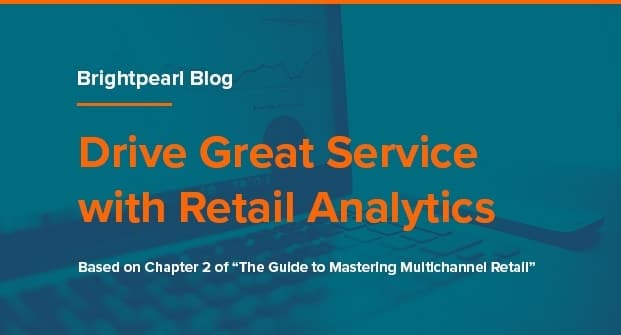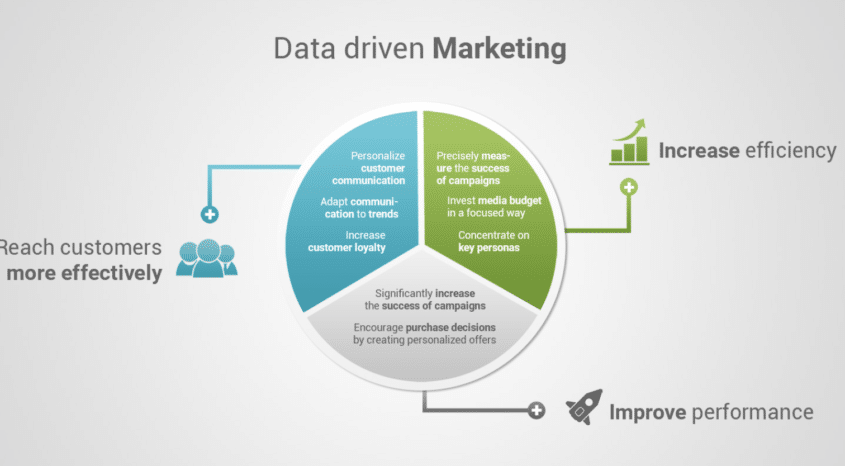Driving customer engagement can be difficult for multichannel retailers. When you’ve got multiple channels to manage and you’re trying to focus on the day-to-day running of your business, understanding your customers can become the last thing on your mind. However, it’s important for it to be at the forefront of your mind as customer loyalty and engagement can increase revenue.
The cost of a new customer costs five times as much as keeping an existing one and increasing customer retention rates by just 5% increases profits by 25% to 95%, according to Econsultancy. That’s a very good reason to focus on increasing your customer engagement in order to increase revenue!
There’s a link between great customer service and customer engagement. If you provide great customer service, your customers are more likely to engage with your business. Understanding your customers by focusing on analytics can improve customer service, customer engagement and profits!
Retail analytics can provide you with keen consumers insights, from buying habits, to average order value spend, to what sales channel they are most likely to buy on. Using knowledge of this information wisely can significantly boost customer retention and revenue. Wouldn’t it be nice to have a loyal, frequently-returning customer base?
Here’s three areas to focus your retail analytics on in order to drive great service and create a more profitable future for your business…
Build a single view of the customer
1. Build customer insight profiles
Logging customer activity can help to build a single view of the customer and give you a better understanding of the customer’s typical behaviour, making it easier for you to deliver great service and increase future profits.
Focus on logging all customer activity such as orders placed, products returned, telephone conversations and even reactions to marketing campaigns. The more customer activity you log, the better understanding you will have of your customers needs and wants.
2. Provide employees with customer history
It’s not just enough to be logging every customer interaction; it’s important to provide employees with full customer history records, which can help them provide the excellent and personalized service needed to improve customer engagement.
3. Upsell!
Why not go one step further and encourage your team to upsell? If you incentivize your employees, they are much more likely to look for opportunities to further increase sales. Your staff can use customer information to get a better understanding of what to upsell. Pitching something a customer loves is much more likely to lead to successful upsell.
4. Time communications
With all this knowledge of your customers buying habits, you can easily time marketing communications for maximum impact. If you know what time they shop, send your email marketing at the right time. If you know what they love, target new or specific products at the consumer.
Analyze your customer base
1. Segment your customer base
Use the data you have on your customers to segment your customer base. Categorize yourcustomers by order history, location and where they are in the lifecycle to make specific-targeting much easier.
2. Analyze marketing responses
Once your customers are segmented you can analyze marketing responses to see which campaigns have worked best by segment in the past. You can then easily replicate previous successful marketing tactics to specific categories of customers.
3. Maximize profit with targeted offers
A great way to maximize profit is by targeting your offers and discounts to the right people. Why not offer discounts for those who are weary to the price, those who have only bought from discounts in the past. Target new products at people who have bought similar products in the past.
Maximize the lifetime value of customers
The cost of acquiring a new customer is much higher than keeping a returning customer. It’s important to focus on the lifetime value of customers. When acquiring new customer, it’s important to focus on building lifetime value to make the acquisition cost worthwhile. Just gaining a new customer is not enough!
1. Analyze your most valuable customers against each other
A great analytics tip is to analyze your most valuable customer against each other. If you’ve got a valuable customer that works, pay attention to what is working. Find out the crucial questions. Where did you first acquire them? What was their first purchase? What made them continue to purchase with you?
2. Replicate your best existing customer
Go one step further than just analyzing valuable customers against each other by replicating it! Copy what works with your best existing customers and try this out with the new customers you acquire. If you’re aware of how you’ve built engagement with your best customers, try out the techniques on your new customers and persuade them to return!
3. Nurture customers to build lifetime value
Once you’ve acquired those new customers make sure you nurture them to build lifetime value. Perhaps offer them 10% off their second order to get them repurchasing with you. But don’t forget about your older customers, they’re still valuable so keep them engaged!
For more great advice on achieving multichannel success download the free ‘Guide to Mastering Multichannel Retail’.





